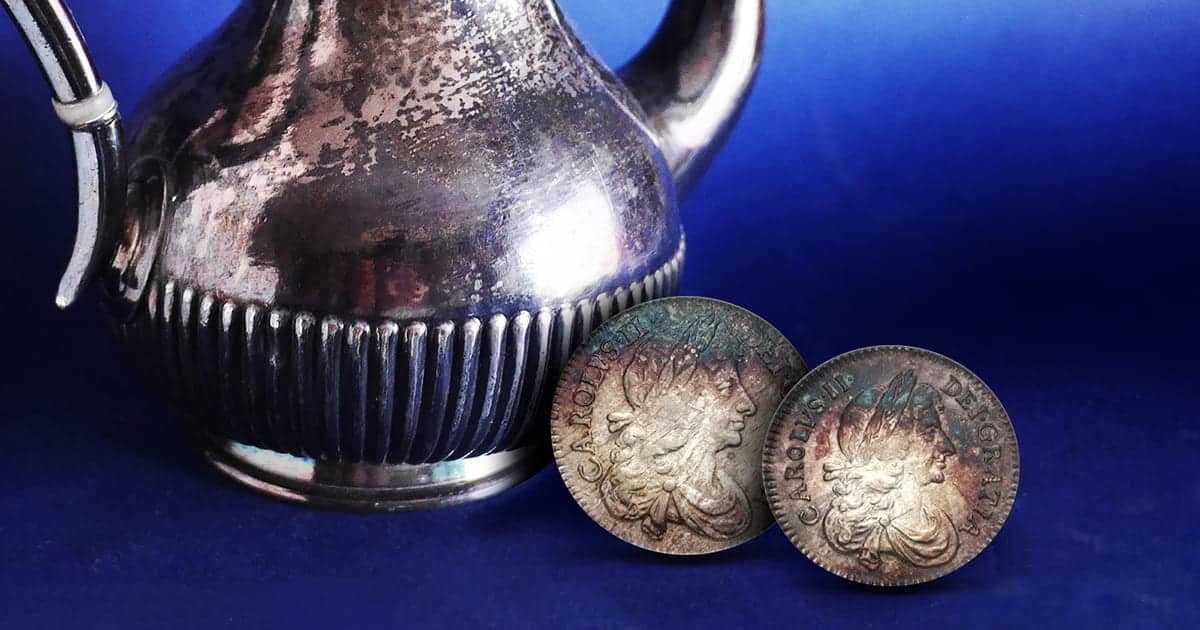
Silver is a chemically active metal. It reacts to other items in the air that it touches. Silver also reacts to gases or prolonged exposure to sulphur gases in the air. This reaction causes the silver to change color and after prolonged exposure, the tarnish or color can darken considerably. This layer of tarnish—also called toning—can be bright, dull, or may even have a pattern because it was stored in cardboard or in a bag.
Naturally occurring toning with great and vivid colors can enhance the value and desirability of a coin. But too much dark, splotchy or unattractive toning may decrease the eye appeal of the coin and its overall value.
Moisture and other chemicals in the air can also tarnish silver and may impair its value if it gets too dark or unattractive.
How to Prevent Tarnishing in Fine Silver
Storing fine silver in dry, moisture-free locations, away from sulphur-laden items can considerably help fine silver not tarnish. Also, avoid exposure to household chemicals and avoid having fine silver items touch one another if possible.
How to Prevent Sterling Silver Tarnishing
Sterling silver also tarnishes. Sterling silver is .925 fine and reacts to tarnish more slowly than pure silver. Again, the same caveats as above apply – keep it dry, away from all moisture, away from all chemicals, and from touching one another.
Does Tarnish Affect Your Silver’s Value?
Beautiful color on your coins can certainly and seriously enhance their value, however, color on other silver items is generally not recommended. Most people, except coin collectors and dealers, prefer silver utensils and teapots to be nice and shiny.
Should You Clean Tarnish?
There are different answers depending on whether you have jewelry, silverware, or vintage coins.
There are “dips” for jewelry and silverware that remove the top microscopic layers of tarnish from these items. A quick dip is advised. However, since these are chemical dips, you must remove all the chemical residue. Otherwise, you can leave a permanent “spot.”
Silverware can be polished, but silverware will also pick up polishing lines and hairlines through polishing. It must be done gently and with an appropriate soft cloth that won’t mark the items. Most people use a jeweler’s rouge cloth – which is soft and made for polishing. Be sure never to use these cloths on coins. Otherwise, they will look used and detract a little from the value.
Never attempt to clean a silver coin, even using a chemical dip. Cleaning silver coins is always best left to professionals who know exactly how to do it without ruining the coin’s surface. Also, a coin dealer should be able to tell you when the toning improved the appearance and the value of the coins and when it harms the same appearance and value.





